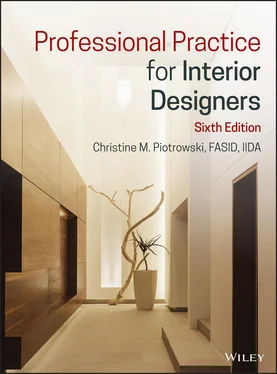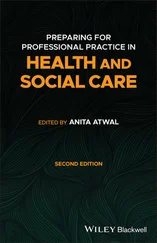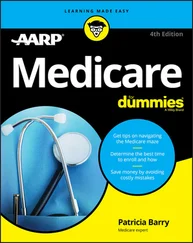Christine M. Piotrowski - Professional Practice for Interior Designers
Здесь есть возможность читать онлайн «Christine M. Piotrowski - Professional Practice for Interior Designers» — ознакомительный отрывок электронной книги совершенно бесплатно, а после прочтения отрывка купить полную версию. В некоторых случаях можно слушать аудио, скачать через торрент в формате fb2 и присутствует краткое содержание. Жанр: unrecognised, на английском языке. Описание произведения, (предисловие) а так же отзывы посетителей доступны на портале библиотеки ЛибКат.
- Название:Professional Practice for Interior Designers
- Автор:
- Жанр:
- Год:неизвестен
- ISBN:нет данных
- Рейтинг книги:4 / 5. Голосов: 1
-
Избранное:Добавить в избранное
- Отзывы:
-
Ваша оценка:
- 80
- 1
- 2
- 3
- 4
- 5
Professional Practice for Interior Designers: краткое содержание, описание и аннотация
Предлагаем к чтению аннотацию, описание, краткое содержание или предисловие (зависит от того, что написал сам автор книги «Professional Practice for Interior Designers»). Если вы не нашли необходимую информацию о книге — напишите в комментариях, мы постараемся отыскать её.
Professional Practice for Interior Designers
Professional Practice for Interior Designers — читать онлайн ознакомительный отрывок
Ниже представлен текст книги, разбитый по страницам. Система сохранения места последней прочитанной страницы, позволяет с удобством читать онлайн бесплатно книгу «Professional Practice for Interior Designers», без необходимости каждый раз заново искать на чём Вы остановились. Поставьте закладку, и сможете в любой момент перейти на страницу, на которой закончили чтение.
Интервал:
Закладка:
The Interior Design magazine report also provides information on the amount of fees earned by specialties, including residential and the largest firms that do foreign projects. Remember that salary rates in this report are for the 100 largest design firms participating in this annual report; they may not reflect salary rates in your area. Note also that these types of data reports lag approximately one year from when the data were obtained.
*U.S. Department of Labor, Bureau of Labor Statistics, “Occupational Employment Statistics: 27‐1025 Interior Designers” (as of January 2019). Available at www.bls.gov/oes
**U.S. Department of Labor, Bureau of Labor Statistics, “Occupational Outlook Handbook.” Interior Designers. January 2019. Available at www.bls.gov/ooh
***Zimmerman, January 2018, pp. 103–120.
WEB SITES RELEVANT TO THIS CHAPTER
www.asid.orgAmerican Society of Interior Designers
www.cidq.orgCouncil for Interior Design Qualification
www.idcec.orgInterior Design Council for Continuing Education and, Inc
www.interiordesigncanada.orgInterior Designers of Canada
www.iida.orgInternational Interior Design Association
www.bls.govU.S. Bureau of Labor Statistics
www.careeronestop.orgCareerOneStop is sponsored by the U.S. Department of Labor
www.ncidq.orgNational Council for Interior Design Qualification
KEY TERMS
ateliers
Brand
Commercial interior design
Contract design
Ensembliers
Interior design
Profession
Pro bono
Residential interior design
Social responsibility
Vignette
KEY NAMES
Elsie de Wolfe
Norman deHaan
Dorothy Draper
Charles Gelber
Florence Knoll
Eleanor McMillen
William R. Moore
Louis Tegre
ORGANIZATIONS
American Institute of Decorators (AID)
American Institute of Interior Decorators (AIID)
American Institute of Interior Designers (AID)
American Society of Interior Designers (ASID)
Council for Interior Design Accreditation (CIDA) (formerly FIDER)
Institute of Business Designers (IBD)
Interior Design Council for Continuing Education and, Inc (IDCEC)
Interior Design Educators Council (IDEC)
International Interior Design Association (IIDA)
International Society of Interior Designers (ISID)
Interior Designers of Ontario www.arido.ca
Interior Designers of British Columbia www.idibc.org
National Council for Interior Design Qualification (NCIDQ)
National Office Products Association (NOPA)
National Society for Interior Designers (NSID)
WHAT WOULD YOU DO?
Each chapter concludes with several situations that may or may not involve ethical behavior or other professional choices and challenges. These scenarios can be discussed individually or in groups. As you read these scenarios, consider ethics, good business practice, and overall professional conduct.
1 It came to Phyllis's attention that her boss was considering hiring a designer—Jane Doe. Phyllis knew Jane because they worked together at a different design firm a few years ago. Phyllis knew that Jane had been fired because the other employer discovered Jane falsifying several types of client documents in connection with projects. Jane found out this information from someone at that previous firm after Phyllis had left the firm. Phyllis was not sure what to do—keep quiet or report Jane's behavior to her supervisor.
2 Alex has been designing hospitality spaces in the East for six years. She has become increasingly interested in sustainable design and is planning to become LEED® certified. A former client, Robert Smith, has contacted her about the design of his second home in Wyoming. Because Alex started in design at a residential furniture store/studio, she feels very comfortable in doing the project.Mr. Smith wants to use green products, but is concerned about the extra costs. He heard from a friend that “green stuff costs a lot of green.” The client wants Alex to do the interior planning and specification and to use green products if they do not cost too much. He is also reluctant to pay the fees that Alex plans to charge to cover her travel. He suddenly says, “Let's reduce your carbon footprint by not having you travel to the job site at all.”
3 Roberta owns a design studio and specializes in the design of high‐end residential projects. She has recently lost two projects to a competitor where a former employee now works. One of those projects was for a former client couple, who are building a very large penthouse in Manhattan.Roberta is quite upset about losing the project for the former clients. She thought they had gotten along very well and doesn't understand why the clients would go to someone else. She calls the former clients to ask why they went with a different designer. Feeling that she got an unsatisfactory answer, Roberta now plans to ask vendors about the designer who was given the contract by her former clients.
REFERENCES
1 1. Concise Oxford American Dictionary, 2006, p. 706.
2 2. Johnson, 1995, p. 216.
3 3. Marshall, 1998, p. 527.
4 4. Jensen, September 2001, p. 91.
5 5. Council for Interior Design Qualification, Inc. (CIDQ), 2019. www.cidq.org
6 6. U.S. Department of Labor, Bureau of Labor Statistics Web site, www.bls.gov
7 7. Pile, 2005, p. 180.
8 8. Campbell and Seebohm, 1992, p. 70.
9 9. Abercrombie, December 1999, p. 148.
10 10. Abercrombie, December 1999, p. 146.
11 11. Pile, 2005, p. 317.
12 12. Carron, 1998, p. 72.
13 13. Tate and Smith, 1986, p. 322.
14 14. Russell, 1992, p. 11.
15 15. Zimmerman, January 2018, pp. 103–120.
CHAPTER 2 Professional Advancement
As discussed in Chapter 1, a professional must attain certain standards recognized by those in the profession. Interior design professionals and educators often talk about the three Es as a necessary part of the practice of interior design: education, experience, and examination. Although entry into the interior design profession may come in many ways today, the principles of the three Es remain valid.
Professional interior design in the 21st century requires educational preparation in a wide variety of courses specifically within the body of knowledge for interior design. Having a “flair” for decoration is not enough for a professional in the 21st century. Education should continue with professional seminars and workshops for updating and expansion of the professional practitioner's knowledge and skills.
Work experience through internships and/or entry‐level positions in the design industry helps designers see the “real world.” Practitioners gain experience on the job in a wide variety of settings and design specialties, thus preparing themselves for career options.
The third “E”—examination—is a further qualification for the professional interior designer in today's multifaceted world. An examination after completion of education and some period of work experience seeks to test a practitioner's knowledge and skills in the body of knowledge recognized as necessary for practice of the profession. Further, an examination is expected in states that have legal licensing or registration.
After completing this chapter you should be able to:
Explain the three Es and how they relate to the interior design profession.
Discuss why advanced education may be important for some interior designers.
Explain why continuing education is important for all interior designers.
Discuss how an internship program can be beneficial for a student.
Читать дальшеИнтервал:
Закладка:
Похожие книги на «Professional Practice for Interior Designers»
Представляем Вашему вниманию похожие книги на «Professional Practice for Interior Designers» списком для выбора. Мы отобрали схожую по названию и смыслу литературу в надежде предоставить читателям больше вариантов отыскать новые, интересные, ещё непрочитанные произведения.
Обсуждение, отзывы о книге «Professional Practice for Interior Designers» и просто собственные мнения читателей. Оставьте ваши комментарии, напишите, что Вы думаете о произведении, его смысле или главных героях. Укажите что конкретно понравилось, а что нет, и почему Вы так считаете.












